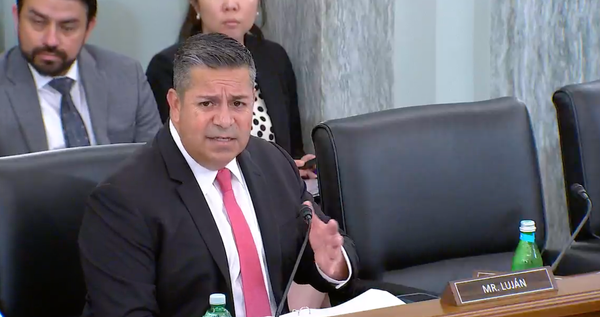Dave Wright: Shared Relocation Fund Will Make More of Finite Spectrum Resource
‘Wireless connectivity is one of the most vital aspects of our digital infrastructure.’

In order to meet the gaps in broadband connectivity that persist throughout the country, we must have a more comprehensive view for the necessity of all available spectrum – whether shared, licensed or unlicensed – understanding that they are complementary and independently important to our nation’s future.
As we figure out how we will meet the needs of an increasingly wireless world, it is critical that we think collaboratively on how we can free up and share spectrum, working closely and cooperatively with the federal agencies responsible for our nation’s spectrum resources, the Federal Communications Commission and the National Telecommunication and Information Administration.
With recent confirmed leadership appointments in the NTIA and FCC, and renewed focus on collaboration and collegiality between these organizations, there is hope for renewed effectiveness in America’s overall management of our spectrum resources.
From a policy perspective, the OnGo Alliance is working to shed light on the incentives that inherently exist around the way spectrum is made available today. For terrestrial uses, there are two long established methods for making spectrum available – via a licensing process including an auction of the frequencies, or via an unlicensed allocation where spectrum is made available on a license-exempt basis.
Licensed bands have given rise to our cellular connectivity, while unlicensed spectrum has enabled innovations like the Wi-Fi and Bluetooth solutions that we know and depend upon today. The near ubiquitous presence of these technologies speaks to the efficacy of these approaches. The US 3.5 GHz Citizens Broadband Radio Service is the first spectrum access framework that combines aspects of licensed (protected access) and unlicensed (opportunistic access) spectrum within a single, dynamically managed access paradigm.
Congress has increasingly been looking to licensed spectrum auctions as a source of revenue to cover the funding requirements for new programs. And Federal users who are occupying spectrum and then make the spectrum available for auction can take advantage of monies made available through the Spectrum Relocation Fund to cover the costs associated with transitioning their systems.
The SRF is in turn funded based the resulting auction revenues. These are examples of the current incentives in the system which are either directly or indirectly tied to auction revenues of licensed spectrum. These incentives inherently bias the policymaking processes toward licensed spectrum, at the expense of unlicensed and/or opportunistic spectrum like we have in the CBRS General Authorized Access tier.
This bias is not helpful in our quest to provide accessible broadband throughout the nation as unlicensed and GAA are key components in most solutions, from Wi-Fi as the “last meter” connection to a fixed broadband network to GAA’s prominent role in rural fixed wireless offerings.
CBRS is an optimal framework for putting mid-band spectrum to intensive uses for a wide variety of uses. In the only two years since CBRS commercial operations were approved by the FCC, over 225,000 CBRS base stations have been installed nationwide.
Collaboration between cloud players, system integrators, radio vendors and operators has reached critical mass, building a vibrant, self-sustaining ecosystem. CBRS has allowed enterprises and rural farms alike the opportunity to install private 4G and 5G networks that are connecting IoT devices – from factory robots to autonomous farm equipment. School districts, airports, military bases and logistics facilities, factories, hospitals, office buildings, and public libraries are only but a few of the limitless facilities where connectivity has been enabled by CBRS spectrum.
Wireless connectivity is one of the most vital aspects of our digital infrastructure, and we must use all of the available resources in order to make broadband as ubiquitous as any other utility. Our policymaking, and the incentives around it, must account for the fact that all types of spectrum are important – whether licensed, unlicensed or shared – and that it is vital to ensure that there are proper allocations of each type to meet the relentless demand. We must work together to make the most of what we have.
Dave Wright played an instrumental role in the formation of the OnGo Alliance (originally known as the CBRS Alliance), collaborating with other founding members to create a robust multi-stakeholder organization focused on the optimization of LTE and 5G services in the CBRS band. He served as the Alliance’s first Secretary from its launch in August 2016 and was elected as the President of the Alliance in February 2018. He advocates for unlicensed, licensed, and dynamic sharing frameworks – recognizing the vital role that all spectrum management regimes play in our increasingly wireless world. This piece is exclusive to Broadband Breakfast.
Broadband Breakfast accepts commentary from informed observers of the broadband scene. Please send pieces to commentary@breakfast.media. The views expressed in Expert Opinion pieces do not necessarily reflect the views of Broadband Breakfast and Breakfast Media LLC.









